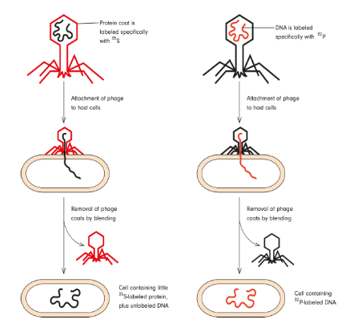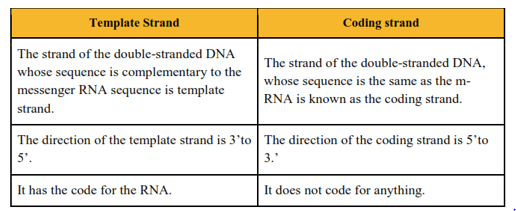
NCERT Solutions for Class 12 Biology Chapter 6 Molecular Basic of Inheritance PDF
Hey, are you a class 12 student and looking for ways to download NCERT Solutions for Class 12 Biology Chapter 6 Molecular Basic of Inheritance PDF? If yes. Then read this post till the end.In this article, we have listed NCERT Solutions for Class 12 Biology Chapter 6 Molecular Basic of Inheritance in PDF that are prepared by Kota’s top IITian Faculties by keeping Simplicity in mind.
If you want to learn and understand class 12 Biology Chapter 6 "Molecular Basic of Inheritance" in an easy way then you can use these solutions PDF.
NCERT Solutions helps students to Practice important concepts of subjects easily. Class 12 Biology solutions provide detailed explanations of all the NCERT questions that students can use to clear their doubts instantly.
If you want to score high in your class 12 Biology Exam then it is very important for you to have a good knowledge of all the important topics, so to learn and practice those topics you can use eSaral NCERT Solutions.
In this article, we have listed NCERT Solutions for Class 12 Biology Chapter 6 Molecular Basic of Inheritance PDF that you can download to start your preparations anytime.
So, without wasting more time Let’s start.
Question 1. Group the following as nitrogenous bases and nucleosides: Adenine, Cytidine, Thymine, Guanosine, Uracil, and Cytosine
Solution: Cytidine and Guanosine are the nucleosides.
Adenine, Cytosine, Thymine and Uracil are the nitrogenous bases.
Question 2. If a double-stranded DNA has 20 percent of cytosine, calculate the percentage of adenine in DNA.
Solution. According to Chargaff's rule, DNA from any cell of any organisms should have a 1:1 ratio of pyrimidine and purine bases $(\mathrm{A}=\mathrm{T}$ and $\mathrm{G}=\mathrm{C}$ ).
The given percent of cytosine is $20 .$ So, the percent of guanine will also be 20 , according to Chargaff's rule.
Hence, Percent of $(\mathrm{C}+\mathrm{G})=20+20=40 \%$
So, $100=40+(\mathrm{A}+\mathrm{T})$
$(A+T)=100-40=60 \%$
Hence, $\mathrm{A}$ is $30 \%$ and $\mathrm{T}$ is $30 \%$.
Therefore, the calculated percentage of adenine in DNA would be $30 \%$ if $20 \%$ of cytosine is present in DNA.
Question 3. If the sequence of one strand of DNA is written as follows: 5'ATGCATGCATGCATGCATGCATGC-3' Write down the sequence of the complementary strand in the $3^{\prime} \rightarrow 5^{\prime}$ direction.
Solution. The $3^{\prime} \rightarrow 5^{\prime}$ direction of the sequence of the complementary strand is:
3'-TACGTACGTACGTACGTACGTACGTACG- $5^{\prime}$
Question 4. If the sequence of the coding strand in a transcription unit is written as follows: $5^{\prime}$ ATGCATGCATGCATGCATGCATGCATGC-3', write down the sequence of $\mathrm{m}$ RNA.
Solution. During transcription, the template strand ( $3^{\prime} \rightarrow 5$ ') of DNA codes for m-RNA and hence the sequence of template strand and m-RNA would be complementary to each other whereas the coding strand $\left(5^{\prime} \rightarrow 3^{\prime}\right)$ of DNA will be same as m-RNA (except that $\mathrm{T}$ is replaced by $\mathrm{U}$ in m-RNA).

Here, the sequence of a coding given is:
5'-ATGCATGCATGCATGCATGCATGCATGC-3'
Hence, the sequence of m-RNA would be:
5'-AUGCAUGCAUGCAUGCAUGCAUGCAUGC-3'
Question 5. Which property of DNA double helix led Watson and Crick to hypothesise the semi-conservative model of DNA replication? Explain.
Solution. The nitrogenous bases form a complementary pair between the two polynucleotide chains of DNA was observed by Watson and Crick. Based on the X-ray diffraction data, they proposed that DNA consists of a double helix of two chains with nitrogen bases on the inside and sugar-phosphate on the outside.
Then, they proposed that the two chains are antiparallel with $5^{\prime}-3$ ' orientation of the other. The appearance of the two chains is like that of a rope ladder twisted helically with rigid steps twisted into a spiral.
This property of a double helix model of DNA led them to hypothesise the semiconservative model of DNA replication, where the two strands separate and act as a template for the synthesis of a new complementary strand, individually. Consequently, each daughter DNA molecule would have one parental strand and one newly synthesized daughter strand. As only one parental strand is conserved in each daughter molecule, it is called a "semi-conservative mode of replication".
Question 6. Depending on the chemical nature of the template (DNA or RNA) and the nature of nucleic acids synthesized from it (DNA or RNA), list the types of nucleic acid polymerases.
Solution. The list of the types of nucleic acid polymerases are as following:
(A) DNA-dependent DNA polymerase: It uses a DNA template to catalyze the polymerization deoxynucleotides for synthesising a new DNA strand.
(B) DNA-dependent RNA polymerase: It uses a DNA template strand for synthesising RNA.
Question 7. How did Hershey and Chase differentiate between DNA and protein in their experiment while proving that DNA is the genetic material?
Solution. Alfred Hershey and Martha Chase in 1952 performed their experiments on bacteriophages. These are the viruses which infect bacteria. The bacteriophage infects the bacteria by entering the genetic material into the bacteria. The viral genetic material becomes a part of the bacterial cell which produces further viral particles.
Aim of the experiment was to find out whether protein or DNA entered the bacteria.
Virus particles were grown on medium containing radioactive sulfur and radioactive phosphorus as sulfur was the part of protein and phosphorus was the part of DNA.
Procedure:
The steps of the experiments are as following:
Infection: The bacteriophage were made to infect the bacteria.
Blending: The viral coats were removed by agitating in the blender.
Centrifugation: The viral particles were separated from the bacteria by spinning in a centrifuge.
Observation: It was observed that the bacteria contained radioactive phosphorus while the radioactive sulfur was found in the protein coat of the virus.
Conclusion: It was concluded that it was DNA from the virus which entered the bacterial cells. Hence, it is the DNA which forms the genetic material and gets transferred from one generation to another.
The Hershey - Chase experiment

Question 8. Differentiate between the following:
(A) Repetitive DNA and Satellite DNA
(B) mRNA and tRNA
(C) Template strand and Coding strand
Solution. (A)

(B)

(C)

Question 9. List two essential roles for a ribosome during translation.
Solution. The following essential roles for a ribosome during translation are:
(i) During translation, ribosome binds to mRNA and provides a platform for joining of amino acids.
(ii) During the process of translation, the ribosome also acts as a catalyst for the formation of a peptide bond.
Question 10. In the medium where $E$. coli was growing, lactose was added, which induced the lac operon. Then why does lac operon shut down sometime after the addition of lactose to the medium?
Solution. After adding lactose in the medium where E.coli was growing, the betagalactosidase enzyme is synthesised in $E . c o l i$. This enzyme hydrolyses lactose into galactose and glucose. These sugars are used by bacteria use as a source of energy. In the absence of lactose, the regulatory gene produces a repressor protein which binds on the operator gene and makes it inactive. This prevents RNA polymerase from transcribing the operon. Therefore, lac operon shuts down sometime after the addition of lactose in the medium.
Question 11. Explain (in one or two lines) the function of the following:
(A) Promoter
(B) tRNA
(C) Exons
Solution. (A) Promoter: Promoter is present in the 5 ' region of the coding strand of the DNA. It is the region of the DNA which contains certain conserved sequences. The sigma unit of RNA polymerase identifies these conserved sequences. Later causing the binding of RNA polymerase.
(B) t-RNA: t-RNA is referred to as the transfer RNA. It has a major role during the process of translation. It reads the genetic code and carries the amino acid which is required by the -RNA for translation.
(C) Exon: Human genome has split gene arrangement it has the region of the hn- RNA which codes for the protein is referred to as exon whereas the region which does not code for anything is known as introns.
Question 12. Why is the Human Genome Project called a mega project?
Solution. The aim of the human genome project was to sequence $3 \times 10^{9} \mathrm{bp}$ of the human genome. The estimated cost of the project was 9 billion US dollar (3 US dollar per base pair). The database required to store the information of DNA sequence from a single cell was estimated to be 3300 books ( estimating 1000 pages per book and per page having 1000 letters). The enormous amount of data expected to be generated required high-speed computational devices for data storage and retrieval, and analysis. Hence, considering the requirement and the magnitude of the project, it was called a mega project.
Question 13. What is DNA fingerprinting? Mention its application. Solution. DNA Fingerprinting is a technique which is used to find out the variations in individuals of a population at the DNA level. It works on the principle of polymorphism in the DNA sequences.
The applications of DNA fingerprinting are as follows:
It used in establishing a connection in the family
It helps in solving disputes regarding paternity.
It is used in forensic science.
It helps in tracing the evolutionary relationship between the organisms.
Question 14. Briefly describe the following:
(A) Transcription
(B) Polymorphism
(C) Translation
(D) Bioinformatics
Solution. (A) Transcription is a process in which mRNA is synthesised from doublestranded DNA. It takes place in the cytoplasm in case of prokaryotes, and it occurs in the nucleus in case of eukaryotes. The first step of transcription is initiation. In this step, the sigma unit of RNA polymerase identifies the Promoter region in the DNA. The RNA polymerase binds to the DNA and carries out the addition of nucleotides to the RNA this process is referred to as elongation. When the messenger RNA is fully synthesised, the final termination is caused by rho protein. This protein has helicase activity and causes the termination of the RNA-DNA hybrid.
(B) Polymorphism refers to change at the genetic level, which arises due to mutations. The allele sequence variation is called DNA polymorphism if more than one variant at a locus occurs in the human population. As mutations in these sequences may not have any immediate effect, the probability of such variation to be observed in a non-coding DNA sequence is higher. It has an important role in evolution and speciation. These mutations keep on accumulating in each generation and form one of the bases of polymorphism.
(C) The translation is a process of polymerisation of amino acids to form a polypeptide. Messenger RNA, transfer RNA, and ribosomal RNA participates in the process of translation. Messenger RNA provides the sequence for amino acids in the form of codons. Transfer RNA brings the amino acids and forms the peptide bond. Ribosomal RNA forms the entire translation machinery and initiate the process of translation. Further, the elongation takes place by the addition of amino acids followed by termination upon completion of polypeptide chain formation.
(D) Bioinformatics is a branch of science which uses computation to extract the information about the biological data. The use of computational device helps in the collection, storage, retrieval and analysis of the data.
Also Read,
Class 12 Chemistry Notes Free PDF Download.
Class 12 Biology Book Chapterwise PDF Download.
Class 12 Biology Exemplar Chapterwise PDF Download.
If you have any Confusion related to NCERT Solutions for Class 12 Biology Chapter 6 Molecular Basic of Inheritance PDF then feel free to ask in the comments section down below.
To watch Free Learning Videos on Class 12 Biology by Kota’s top Doctor Faculties Install the eSaral App
